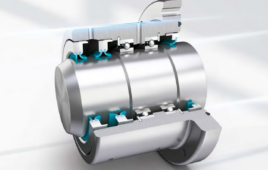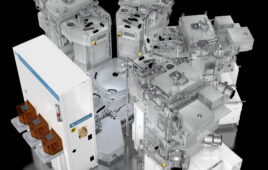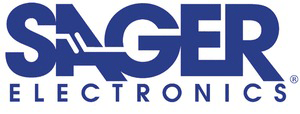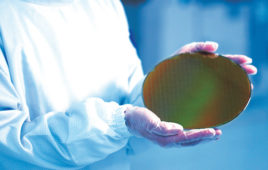Recently, a supplier to the railroad, marine, drilling, wind power, and mining industries received an end-of-life announcement for several critical semiconductor devices used in their systems. The announcement provided the OEM with less than six months to develop an end-of-life (EOL) plan. Because of the markets it serves and the products it provides, the manufacturer must provide customers with maintenance and repair services for an average of 20 years. Accurate forecasts for last-time buys are challenging, especially with forecasts that extend out two decades. Additionally, in this case, a large capital outlay, plus extended expenses for long-term storage of the inventory, would have been a financial burden.

Long-term storage costs for semiconductors can be a financial burden when trying to guarantee availability over a 20-year system life cycle.
After engineering and design teams determined no other options were available, the OEM was faced with a difficult decision: should they make a last-time buy and hope it was sufficient; depend on the availability of residual inventory; re-design the affected PC boards in the system; or partner with a continuing semiconductor manufacturer?
A system redesign—several million dollars—would be too costly for the OEM to undertake. Plus, if they were to design in new generation semiconductors, those new components would likely reach their own EOL prior to their 20-year system life cycle.
Since none of the options examined by the OEM seemed practical or cost effective, the company contacted an authorized continuing manufacturer/distributor (ACMD) for both short-term and long-term supply solutions. As part of its Extension-of-Life process, the ACMD contacted the original semiconductor manufacturer to acquire remaining inventory, including packaged and finished devices, die, intellectual property, tooling, test programs, and test equipment. This transfer of technology provided the OEM with an immediate supply of the critical semiconductor devices from inventory to satisfy short-term manufacturing and maintenance schedules; and it enabled the ACMD to continue the manufacture of a long-term supply of genuine and authorized semiconductor devices.
Through contract, the ACMD safely and securely stores critical semiconductor wafers, die, and finished devices in bonded inventory, and distributes product only to the OEM per the customized schedule. The SPA program is tailored to meet the OEM’s semiconductor procurement needs and effectively alleviates the problems that arise from unplanned EOL events. Customized SPA programs significantly reduce the OEM’s last-time buy investment during the EOL event, and eliminate extra costs associated with proper handling and secure storage.
Despite their best forecasting efforts, the OEM’s last-time buy inventory was insufficient to sustain continued production through the equipment’s life cycle. However, through the ACMD’s Semiconductor Replication Process, the life of the semiconductor device was extended using the original semiconductor manufacturer’s IP and existing wafer stock. With permission from the original manufacturer, the ACMD now continues to manufacture a reliable supply of silicon wafers and finished devices for the OEM, ensuring long-term availability of the critical devices.
![]()
The re-created devices are duplicates of the original semiconductors and are guaranteed to perform to the exact same specifications. The OEM had learned through experience that device re-creation is a much more accurate and dependable process than device emulation. Device emulation only mimics a semiconductor device’s function and doesn’t necessarily match performance specs. The active re-creation of silicon wafers and finished devices has helped the OEM avoid future re-design issues.
Rochester Electronics
www.rocelec.com
::Design World::
Filed Under: Semiconductor manufacture





Tell Us What You Think!